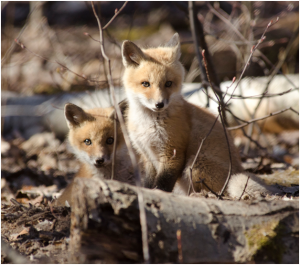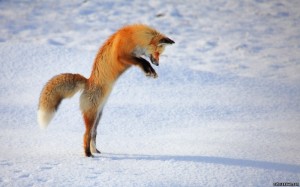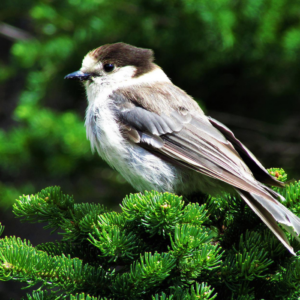What does the fox say? And do?
October 16, 2015
With this month’s featured photo as a fox and we wanted to provide you with some fun facts that you may not have known!
Facts on the Red Fox
- Red Foxes have the widest distribution of any member of the order Carnivora: it is native to North America, Europe, Asia, and North Africa and introduced to Australia.
- Red Foxes can produce 28 different vocalizations. You can often hear the mating calls, which is a sharp, high-pitched shrieking/screaming noise, which can also sound quite terrifying.
- A male fox is called a “dog”, a female fox is called a “vixen,” and a young fox is called either a “kit,” “pup” or “cub.” A group of foxes is called a “skulk.’
- The Red Fox’s tail is known as a “brush”. The fox curls into it in cold weather; it aids in balance, and it is used as a signal flag to communicate with other foxes.
- Foxes signal each other by making scent posts—urinating on trees or rocks to announce their presence.
- Foxes have can climb trees and settle on low branches.
- Foxes have whiskers on their faces and their legs. These help the fox find their way
- A fox’s den is normally a burrow underground, also known as an “earth,” but they can also live above ground in a cozy hollow.
Out for a hunt
- Foxes are great nighttime predators because their eyes are specially adapted to night vision. Behind the light sensitive cells lies another layer called the tapetum lucidum, which reflects light back through the eye. This doubles the intensity of images received by the fox. This is why their eyes glow green when light is shone into them at night. However, they can be seen hunting during the day as well.
- Red Foxes are solitary hunters who feed on rodents, rabbits, birds, and other small game, but their diet can be as flexible as their home habitat: they will eat fruit, vegetables, fish, frogs, and worms. If living among humans, foxes will opportunistically dine on garbage and pet food.
- They catch small rodents with a characteristic high pounce. This technique is one of the first things cubs learn as they begin to hunt.
The Pups

Red Fox kits. Photo by: Phil Myers
- While they are solitary animals, during breeding season (winter) when they court and mate, the dog fox will support the female (vixen) by bringing food for the family (early spring).
- The vixen typically gives birth to a litter of 2-12 pups between March and May every year. The cubs are born blind, deaf and toothless. They weigh about 120 g and are brown or gray. The cubs’ eyes and ears open after two weeks—their pupils are slate-blue. At four weeks, they will emerge from the dens. A new red coat usually grows in by the end of the first month, but some Red Foxes are golden, reddish-brown, silver, or even black. Both parents care for their young through the summer before they are able to strike out on their own in the fall.
- Vixens are occasionally assisted in rearing their cubs by a non-breeding sister or a female cub from a previous litter. These “aunts” gain valuable experience which helps them to rear their own litter successfully the next season. Occasionally there can be two dog fox’s associated with one vixen.
- Many cubs die prematurely due to predation by dogs, badgers, and other animals. The worst danger is the motor vehicle. They also can die of starvation or cold during hard winters.
Since the Red Fox is a common animal to see Canada, we have a few tips on how to live with foxes in your NatureHood.
Tips to live with nearby wildlife such as the Red Fox:
- Do not put out food for foxes.
- Keep waste in secure bins or store bins in a secure building or container.
- Do not put waste bins out until morning of pick-up.
- Make sure outdoor compost containers are wildlife-proof.
- Remove fallen fruit from trees and scattered birdseed from feeders (these foods attract rodents which, in turn, attract foxes).
- Keep pet food inside, and do not leave small pets outdoors unattended.






